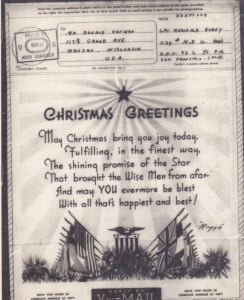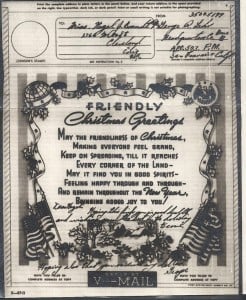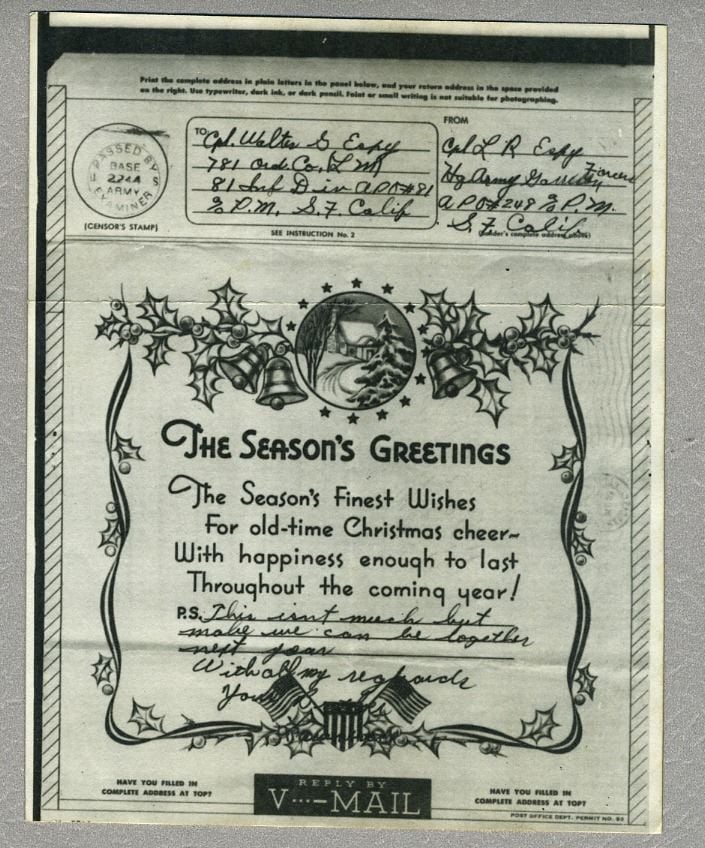Season’s greetings with flags
Seven decades ago, Americans fighting World War II in Europe and the South Pacific paused at Christmas to send letters home. They were decorated with the usual symbols of the season, such as evergreens and stockings. But some of them contained something extra: an image of the U.S. flag.
Most of these messages arrived in the form of V-mails – victory mails – which were half-sized letters, shrunk to save weight and space in shipping them thousands of miles. For special occasions, including birthdays and holidays, pre-printed V-mails with images and poems were given to soldiers to send.

An example was sent from Australia by a corporal to a friend in Wisconsin. He signed his name under a poem that began: “May Christmas bring you joy today,/fulfilling in the finest way/the shining promise of the Star/that brought the Wise Men from afar.”
Decorating that message were multiple national flags, representing the Allies who had joined in the war against Germany and Japan.
Another example was dispatched by a lieutenant in Sicily to his parents in Texas. The letter offered “Best Wishes” and “Seasons Greeting” above a map of Sicily that had Old Glory projecting from the island.

Writing from New Guinea to his girlfriend in Ohio, a college graduate told her that he was “hoping this finds you in good health and wishing you the best of the holiday to come.” His V-mail was circled by holly leaves, an American eagle – and four flags.
In his holiday letter from North Carolina to a sergeant in England, a corporal revealed how many of the ready-made Christmas cards were produced. “There are about 10 different designs of these forms,” he wrote. “Would you care for one of each mailed [to] you?”
The style he sent showed a Christmas bell, pine cones, candles and twin flags sprouting from a star.
A very touching reminder of how families were split by the war was captured in a V-mail from Leyte in the Philippines to Peleliu, a Pacific island. A corporal sent it to his brother, also a corporal. “This isn’t much,” wrote the first soldier, “but maybe we can be together next year.”

Arrayed on the message were Christmas bells and holly, the image of a cottage in the snow, and two American flags, all symbolic of what the brothers had left behind – and what they wanted to return to as quickly as possible.
By James Breig
